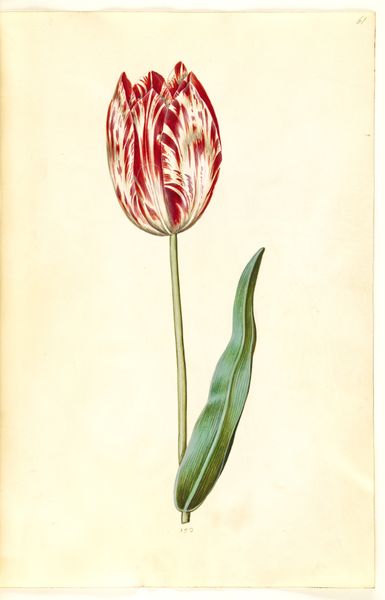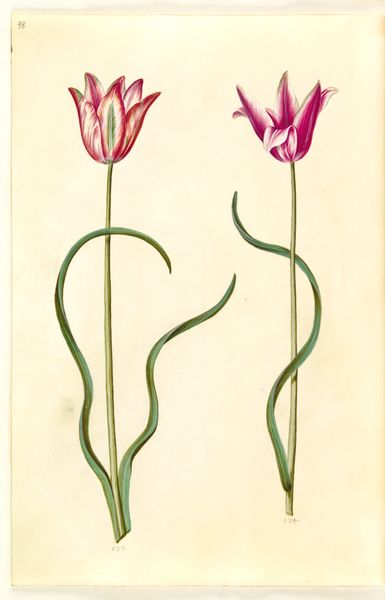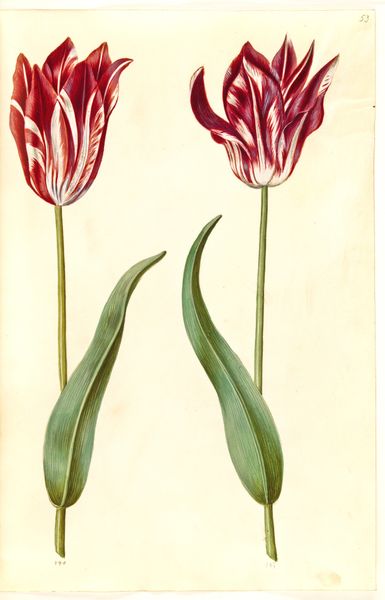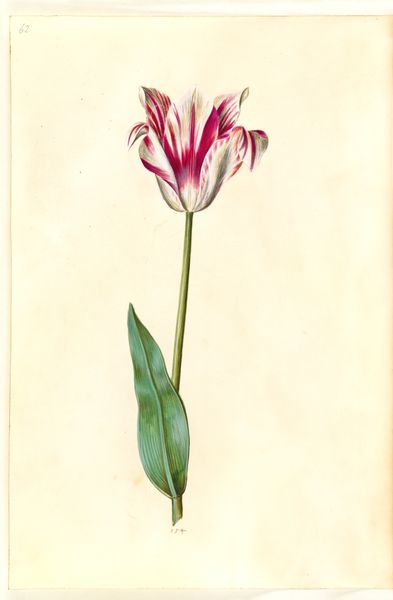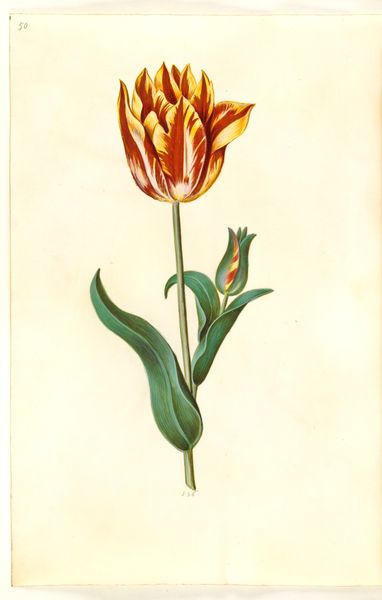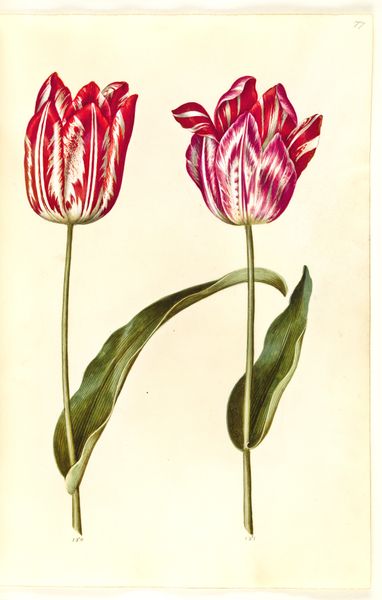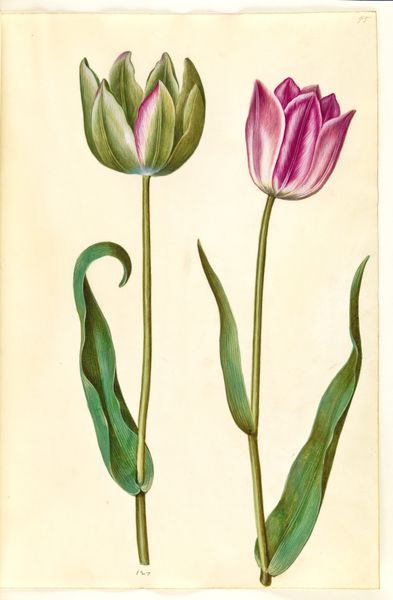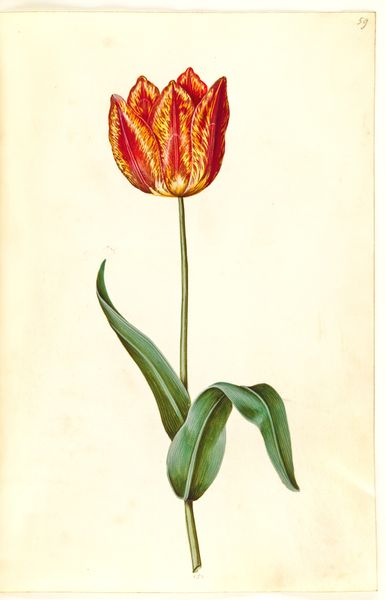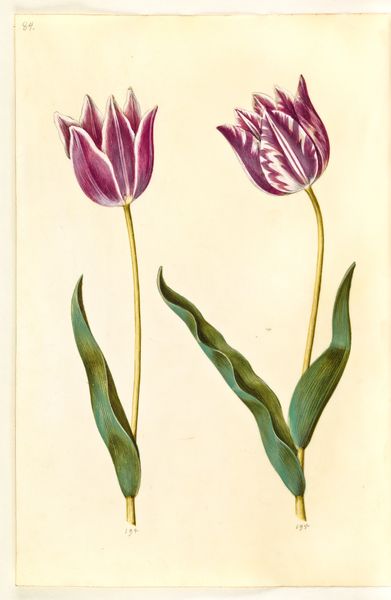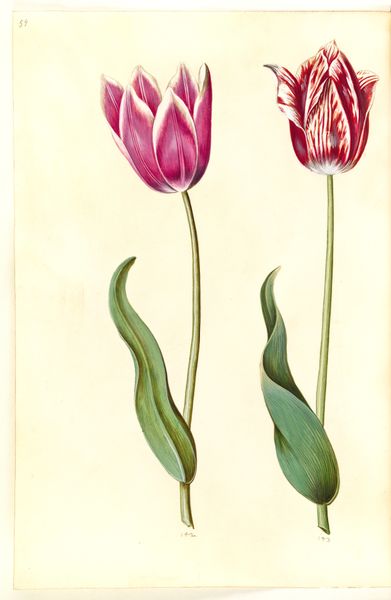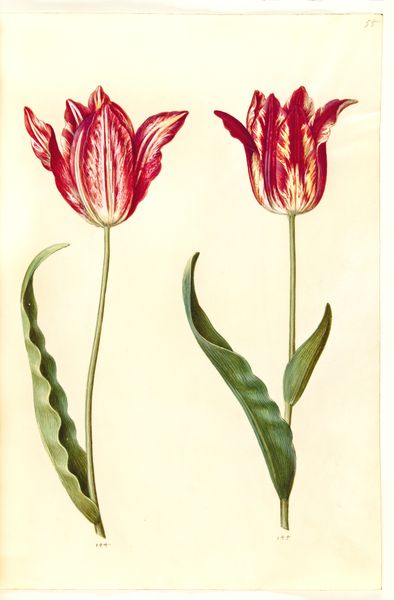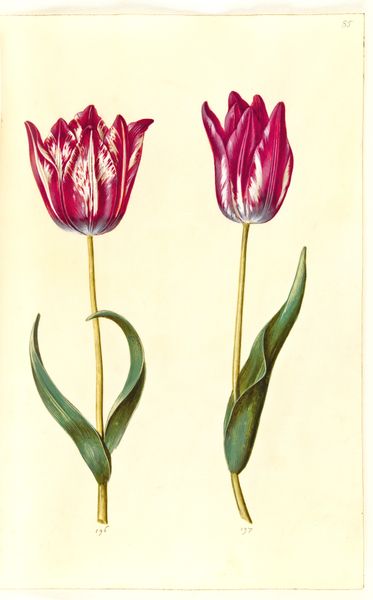
drawing, gouache, paper
#
drawing
#
dutch-golden-age
#
gouache
#
paper
#
botanical art
#
watercolor
Dimensions: 375 mm (height) x 265 mm (width) x 85 mm (depth) (monteringsmaal), 358 mm (height) x 250 mm (width) (bladmaal)
Editor: This is a stunning botanical drawing! It's called "Tulipa gesneriana" or "have-tulipan", created between 1635 and 1664 by Hans Simon Holtzbecker. It looks like it’s made with gouache and watercolor on paper. The detail is incredible. What really strikes me is how fragile the tulip seems, and also the precision. How do you interpret this work? Curator: From a materialist perspective, the "Tulipa gesneriana" becomes less about idealized beauty and more about the socioeconomic circumstances of its creation. Gouache and watercolor on paper were luxury goods. Holtzbecker's skill in botanical illustration speaks to a culture invested in detailed observation, partly fueled by colonial expansion and the commodification of the natural world. Think of Tulip Mania! Editor: Tulip Mania, right! The speculation… so the tulip itself becomes almost secondary to the market forces around it? Curator: Precisely! The image captures the means of representation that fueled consumption and reflects the economic frenzy that briefly gripped the Netherlands. Each petal is not just pigment, but a careful representation of value. How was the production of paper in those times? Was there an industry of specialists that made these tools? Editor: Good point! I hadn’t thought about the labor involved in even making the support for the image, or how pigments were sourced. Curator: And by meticulously recording this tulip, Holtzbecker inadvertently documented a moment of intense, irrational value assignment. Consider the means of distribution too - were these images for a wealthy patron’s personal collection or were prints made, thus creating accessibility? Editor: So much to think about! I initially saw a beautiful flower, but now I see the reflection of the art market, colonialism, and the materials of art production all wrapped into one image. Curator: It is important to note that the making process reflects the values and material realities of its time.
Comments
No comments
Be the first to comment and join the conversation on the ultimate creative platform.

